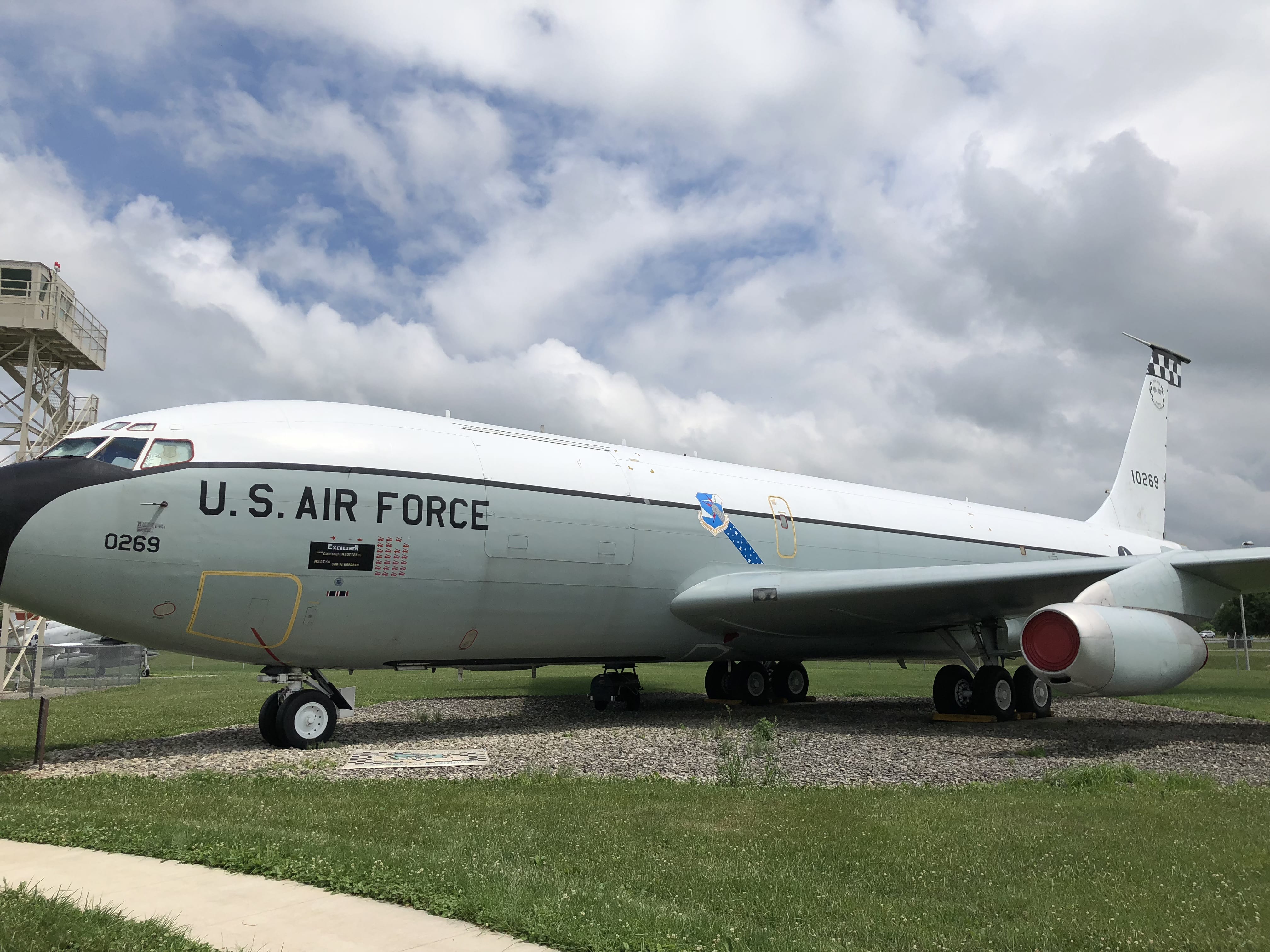BOEING EC-135 STRATOTANKER

The KC-135 Stratotanker’s principal mission is air refueling. This asset greatly enhances the U. S. Air Force’s capability to accomplish its mission of Global Engagement. It also provides aerial refueling support to U.S. Navy, U.S. Marine Corps and allied aircraft.
Features
Four turbofans, mounted under 35-degree swept wings, power the KC-135 to takeoffs at gross weights up to 322,500 pounds (146,285 kilograms). Nearly all internal fuel can be pumped through the tanker’s flying boom, the KC-135’s primary fuel transfer method. A special shuttlecock-shaped drogue, attached to and trailed behind the flying boom, may be used to refuel aircraft fitted with probes. An operator stationed in the rear of the plane controls the boom.
A cargo deck above the refueling system can hold a mixed load of passengers and cargo. Depending on fuel storage configuration, the KC-135 can carry up to 83,000 pounds (37,648 kilograms) of cargo.
Background
AMC manages more than 442 Stratotankers (primary aircraft assigned), of which the Air Force Reserve and Air National Guard fly 268 of those in support of AMC’s mission. McConnell Air Force Base, Kan., is the host for the first KC-135 Air Force Reserve associate unit, the 931st Air Refueling Group, which shares KC-135s with the base’s 22nd Air Refueling Wing.
The Boeing Company’s model 367-80 was the basic design for the commercial 707 passenger plane as well as the KC-135A Stratotanker. In 1954 the Air Force purchased the first 29 of its future fleet. The first aircraft flew in August 1956 and the initial production Stratotanker was delivered to Castle Air Force Base, Calif., in June 1957.
The last KC-135 was delivered to the Air Force in 1965.
Of the original KC-135A’s, almost 400 have been modified with new CFM-56 engines produced by CFM-International. The re-engined tanker, designated either the KC-135R or KC-135T, can offload 50 percent more fuel, is 25 percent more fuel efficient, costs 25 percent less to operate and is 96 percent quieter than the KC-135A.
Under another modification program, Air Force Reserve and Air National Guard tankers were re-engined with the TF-33-PW-102 engines. The re-engined tanker, designated the KC-135E, is 14 percent more fuel efficient than the KC-135A and can offload 20 percent more fuel.
Through the years, the KC-135 has been altered to do other jobs ranging from flying command post missions to reconnaissance. The EC-135C is U.S. Strategic Command’s flying command post. One EC-135C is on alert at all times, ready to take to the air and control bombers and missiles if ground control is lost. Special reconnaissance uses RC-135s and NKC-135A’s are flown in test programs for Air Force Systems Command. Air Combat Command operates the OC-135 as an observation platform in compliance with the Open Skies Treaty.
With projected modifications, the KC-135 will fly and refuel into the next century. A new aluminum-alloy skin grafted to the underside of the wings will add 27,000 flying hours to the aircraft.
Over the next few years, the aircraft will undergo a number of upgrades to expand its capabilities and improve its reliability. Among these are wingtip, air refueling pods; improved cockpit instrument displays; additional communication equipment and enhanced navigation aids.
| SPECIFICATIONS | |
| Primary Function: | Command Post and Communications Relay |
| Span: | 130.83 feet |
| Length: | 136.25 feet |
| Height: | 41.67 feet |
| Weight: | 98,465 lbs. |
| Armament: | None |
| Engines: | Four Pratt & Whitney J57-59W or J57-43WB turbojets |
| Crew: | Three (3) pilot, co-pilot, navigator plus communications/command crew |
| Cost: | $ 26,100,000 |
| Tail Number: | 61-0269 |
| Years in Service: | 28 June 1957 to Present |
| PERFORMANCE | |
| Maximum Speed: | 610 mph |
| Cruising Speed: | 530 mph |
| Range: | 1,500 miles |
| Service Ceiling: | 36,000 feet |